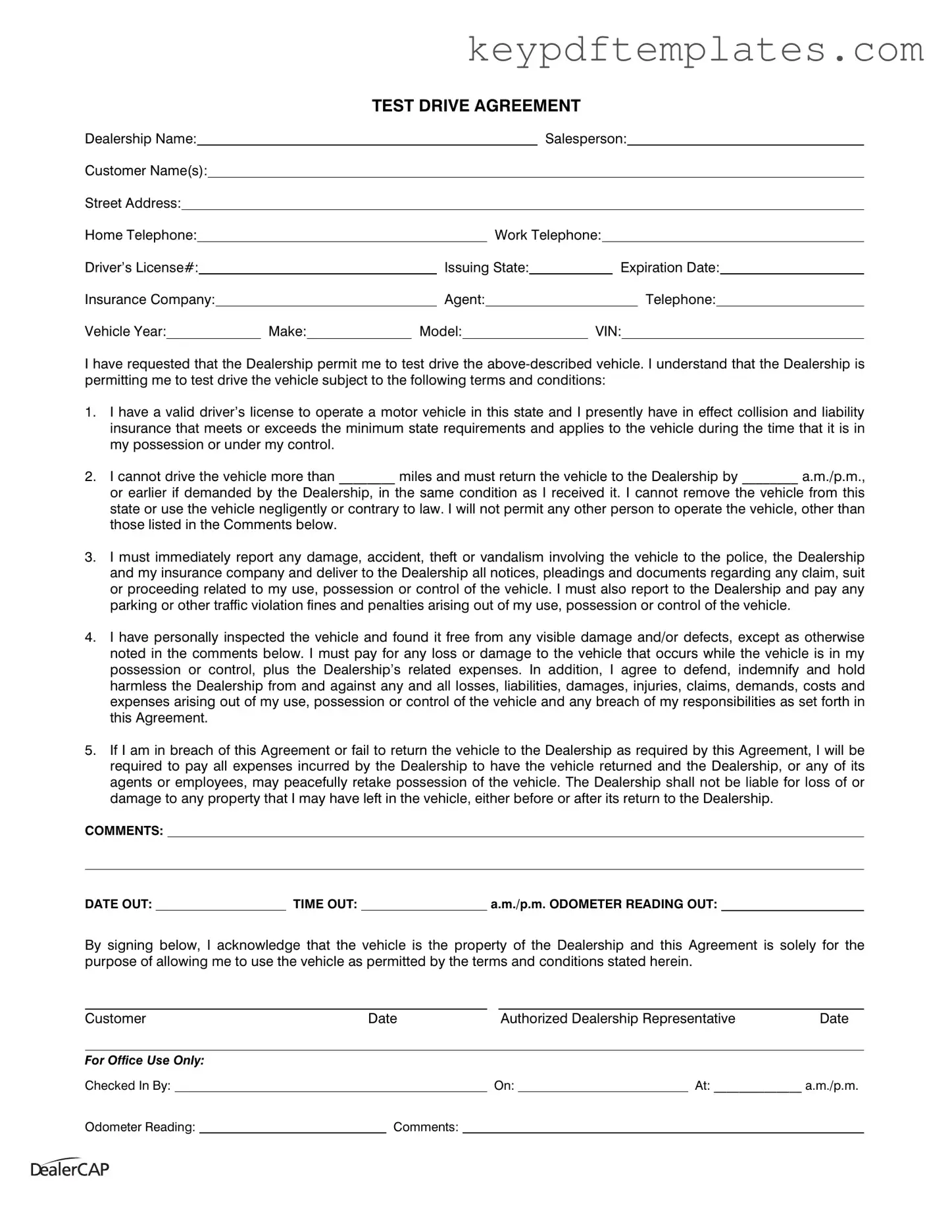Get Test Drive Form
The Test Drive Agreement is a document that allows potential buyers to take a vehicle for a trial run before making a purchase decision. This form outlines important terms and conditions that both the dealership and the customer must agree to, ensuring a safe and responsible test drive experience. Understanding the details of this agreement can help customers navigate the process with confidence and clarity.
Modify Document Online
